Her Camera Setup
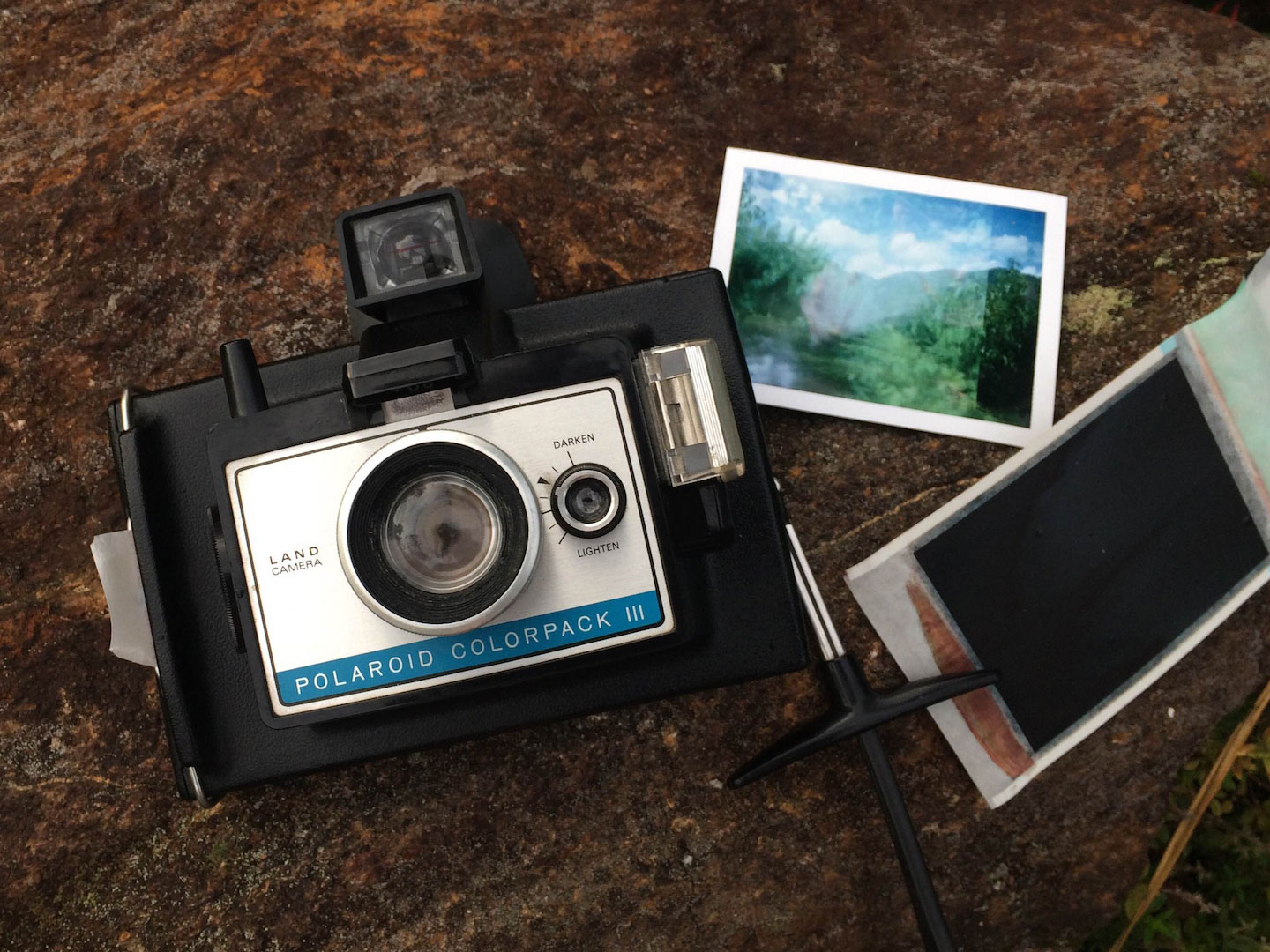
Her Camera Setup
By Madison Perrins
Since I began studying photography several years ago, I’ve noticed that people tend to associate the discipline with a very traditional definition. We imagine beautiful landscapes created with technical perfection on the latest DSLR. But in reality, the process behind making a beautiful image is fascinatingly varied from photographer to photographer. To demonstrate that, I asked four female photographers about what goes on behind the scenes in their creative process to find out what kinds of tools they use and why they are drawn to these tools in particular.
Photo in banner image by Kim Turner-Smith
ALISON SCARPULLA
Alison Scarpulla’s enigmatic imagery moves flawlessly between beautiful captures of the mundane and intentional scenes of women in nature.
A little about her setup, in her words:
“I have always been a minimalist with my gear. I like keeping it simple because when I over complicate I miss the natural moment.
“My Nikon F100 with Tamron 28-75mm f/2.8 lens is my new baby. It took me years to pick out something I felt comfortable shooting with. The F100 is an incredible tool that I would recommend to anyone shooting film. A multiple exposure function is a must have for me.
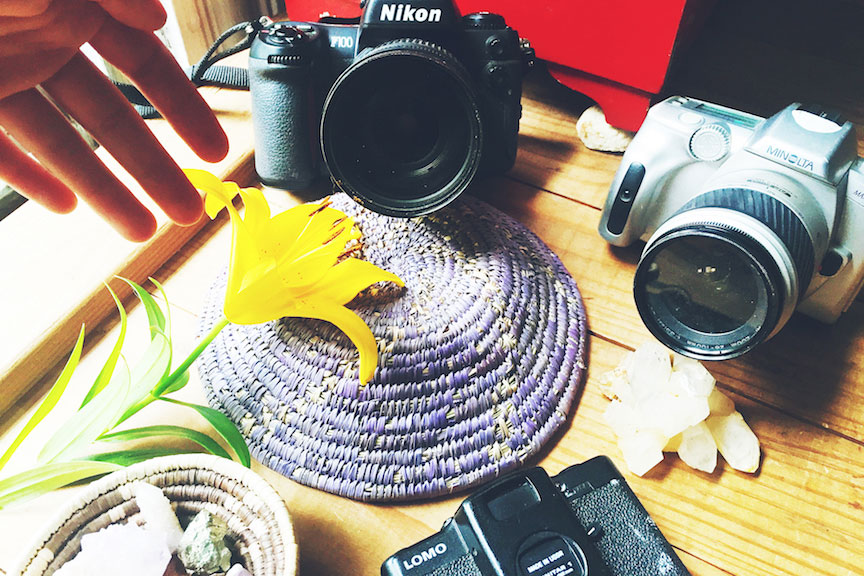
“I prefer working with a lens that has macro to landscape functions so I can shoot in all situations.
“I’ve called the Minolta Maxxum 50 my “secret weapon”. You can get a full set up camera + lens for under $40. It’s got a lot of useful functions like multiple exposure but is really simple to use. A great beginner camera. I’ve been shooting with it for 8 years.
“The LCA has been my go to range-finder for a decade now. I have gone through 6 of them – dropping some in the ocean and breaking others on concrete. The lens on these things (especially the Russian made minolta ones) will really surprise you.”
I’ve been a firm believer from the start that your gear does not define you as a photographer, your vision does.
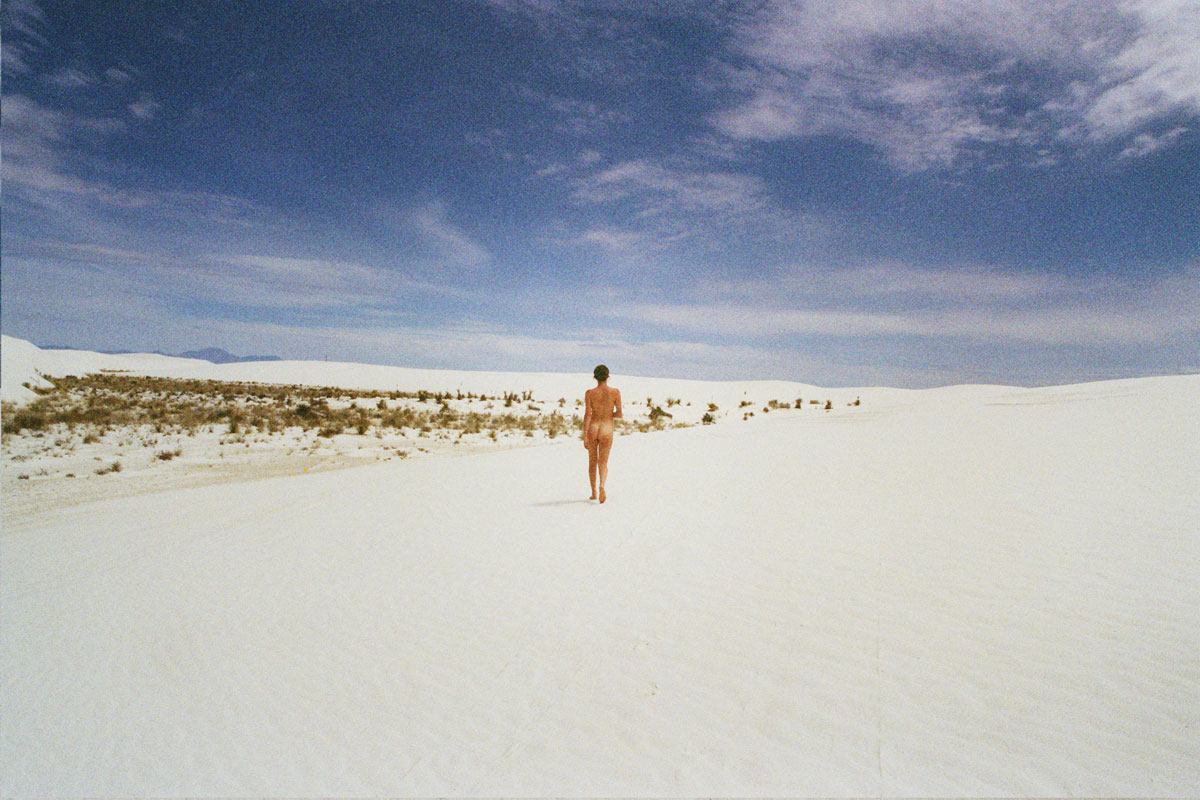
See more of Alison Scarpulla’s work on her portfolio site and Instagram.
KAYLA BEDEY
So, this is where it gets really out there: Kayla’s work is made with a process that most have never heard of and will probably never witness. Yet when you see the final product, you sense the difference in tone, in texture, and an unnameable quality becomes part of the image. For these images, she’s started with a plain sheet of heavy-weighted paper, painted a chemical mixture onto the paper that’s sensitive to light, and then exposed a large negative directly on top of the paper by placing it in a small box with intense UV light. The chemical mixture often involves a little knowledge of chemistry and a laundry list of heavy metals whose names are a headache to remember.
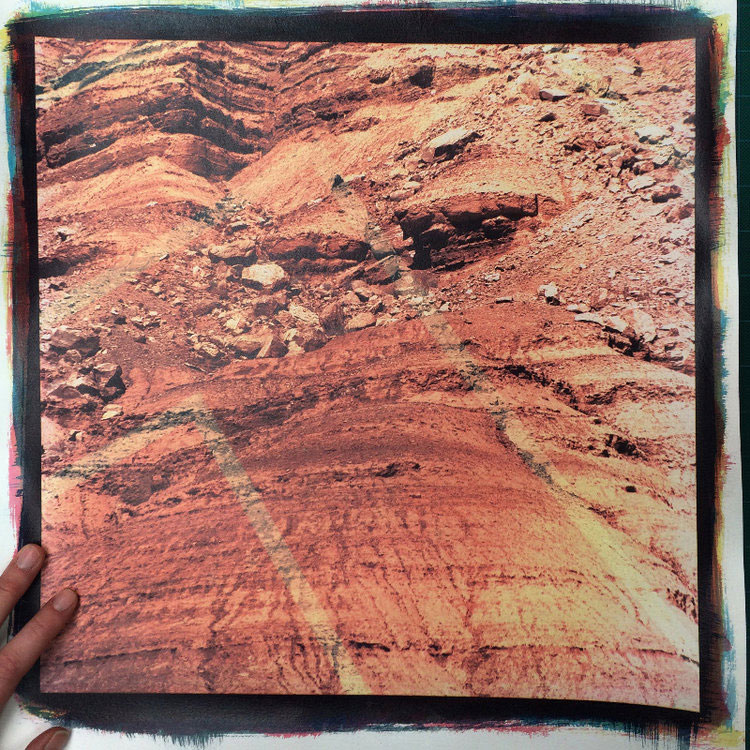
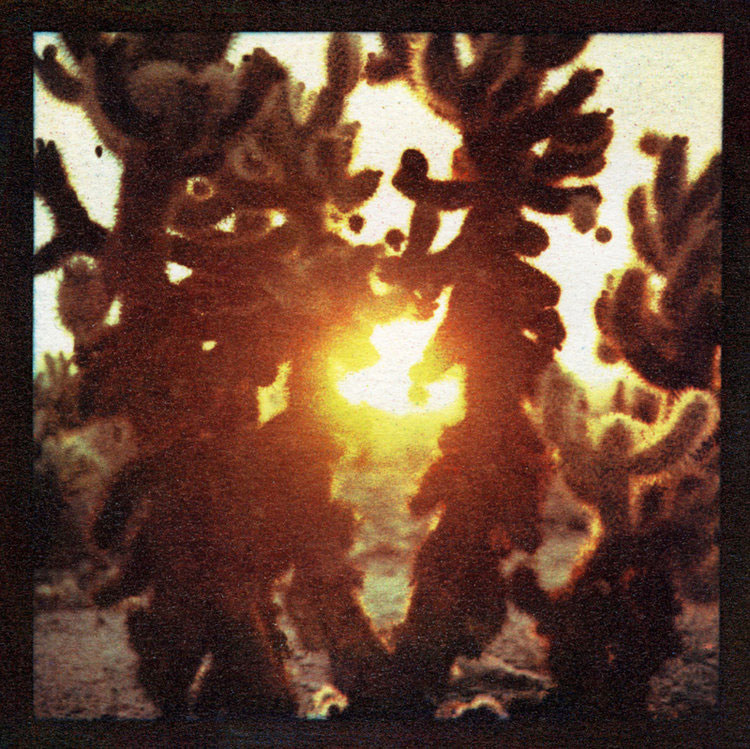
As Kayla tells me:
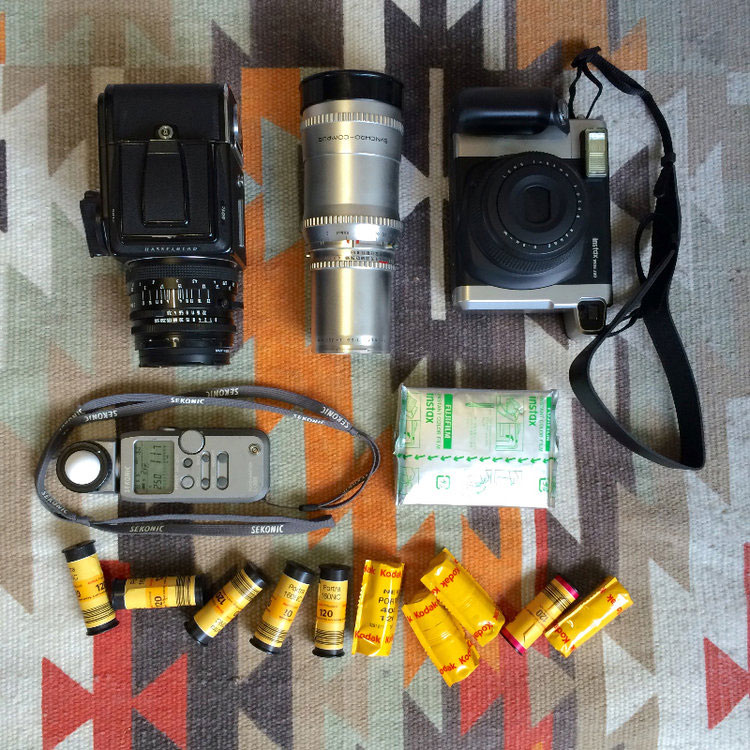
Kayla’s camera setup
“Ok so the gear. There’s Harriet, my badass blacked out Hasselblad 501c medium format camera system. The lens on her is a normal 80mm. She’s been mine for about 6 months, but I’ve already put close to 30 rolls of film through her. She’s a working girl. Before we came together, I borrowed Hasselblads and before that was in a committed relationship with a Rolleiflex. But that’s on hold for a bit.
“That silver tube to the right is a 250mm lens, I’ve come to appreciate a little telephoto action and the 250 has become a staple in my creative seeing. The other silver thing (with the screen) is my light meter. I love my light meter! Film is an absolute MUST. I try and carry a variety of ISO – 160, 400, 800 – usually I shoot Kodak Portra, but I’m not opposed to shooting Fuji or whatever. A lot of people give me film and usually it’s expired! I really enjoy instant film too… who doesn’t… and recently acquired that Fuji Instax Wide gem on the right. So fun.”
Find more of Kayla Bedey’s work on her portfolio site and Instagram.
CHRIS ANDERSON
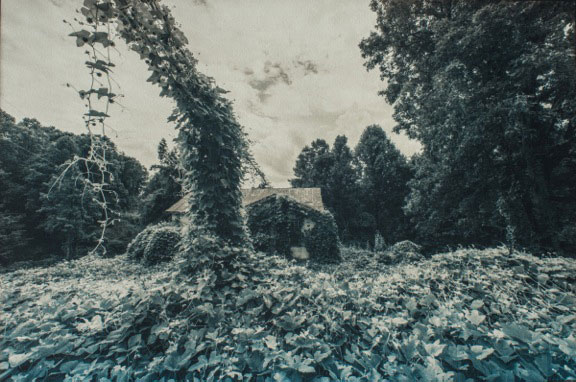 Chris’ work, like Kayla’s, incorporates heavy use of photographic processes that, over decades, have switched from commonly used to esoteric knowledge. Chris is among the few contemporary authorities on the subjects of experimental and alternative photography. A professor of photography herself, she’s published textbooks internationally on both subjects that are widely respected. Her space includes come along with the standard trappings: cameras, film, developing trays, and also heaps of various mixtures of heavy metals for achieving achingly beautiful images with antiquated processes.
Chris’ work, like Kayla’s, incorporates heavy use of photographic processes that, over decades, have switched from commonly used to esoteric knowledge. Chris is among the few contemporary authorities on the subjects of experimental and alternative photography. A professor of photography herself, she’s published textbooks internationally on both subjects that are widely respected. Her space includes come along with the standard trappings: cameras, film, developing trays, and also heaps of various mixtures of heavy metals for achieving achingly beautiful images with antiquated processes.
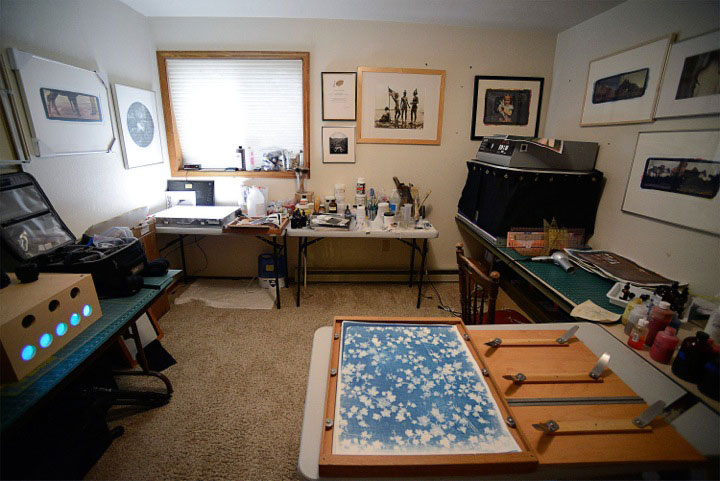
Achieving achingly beautiful images with antiquated processes.
Dive into Chris Anderson’s portfolio site.
KIM TURNER-SMITH
Kim’s striking (and varied) work is a demonstration of what happens when you reframe your perspective on what a mistake is in an image. Letting go of a certain amount of control over imagery, like Kim does, can be an exciting back and forth between failed experiments and unanticipated beauty.
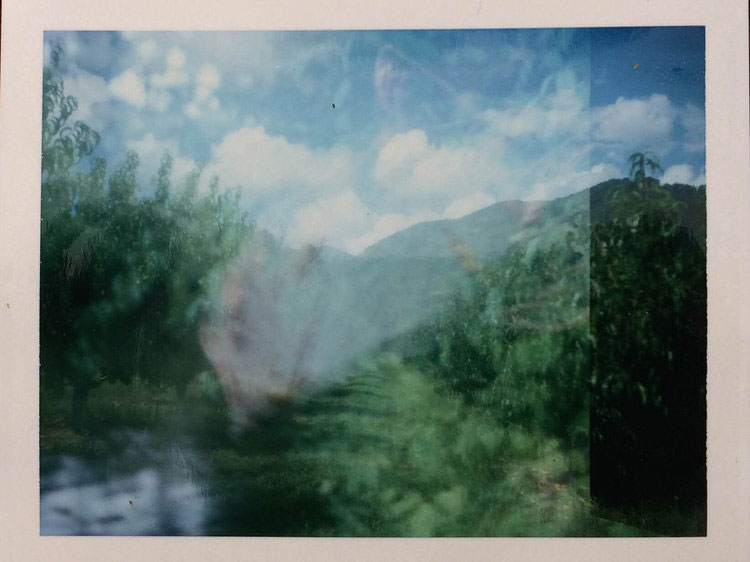

Here’s Kim’s take on liberating her process from strict technical parameters:
“It’s a Polaroid Colorpack III. It takes peel apart pack film and I usually use Fuji FP-100C film. I love all of the unexpected things that can happen when using instant film and old cameras, inaccurate exposure, double exposure, light leaks, skewed color, etc. I sometimes buy expired film from eBay to push the chances of ‘mistakes’ occurring.”
Find more of Kim Turner-Smith’s photography on her portfolio site and Instagram.
Madison Perrins is a consistent contributor to She Explores, as well as a photographer based in Montana. See more of her stunning work via her portfolio site.
Editor’s Note: This article includes Amazon Affiliate links, which provide a small commission for She-Explores. Learn more here.
Be the first to comment